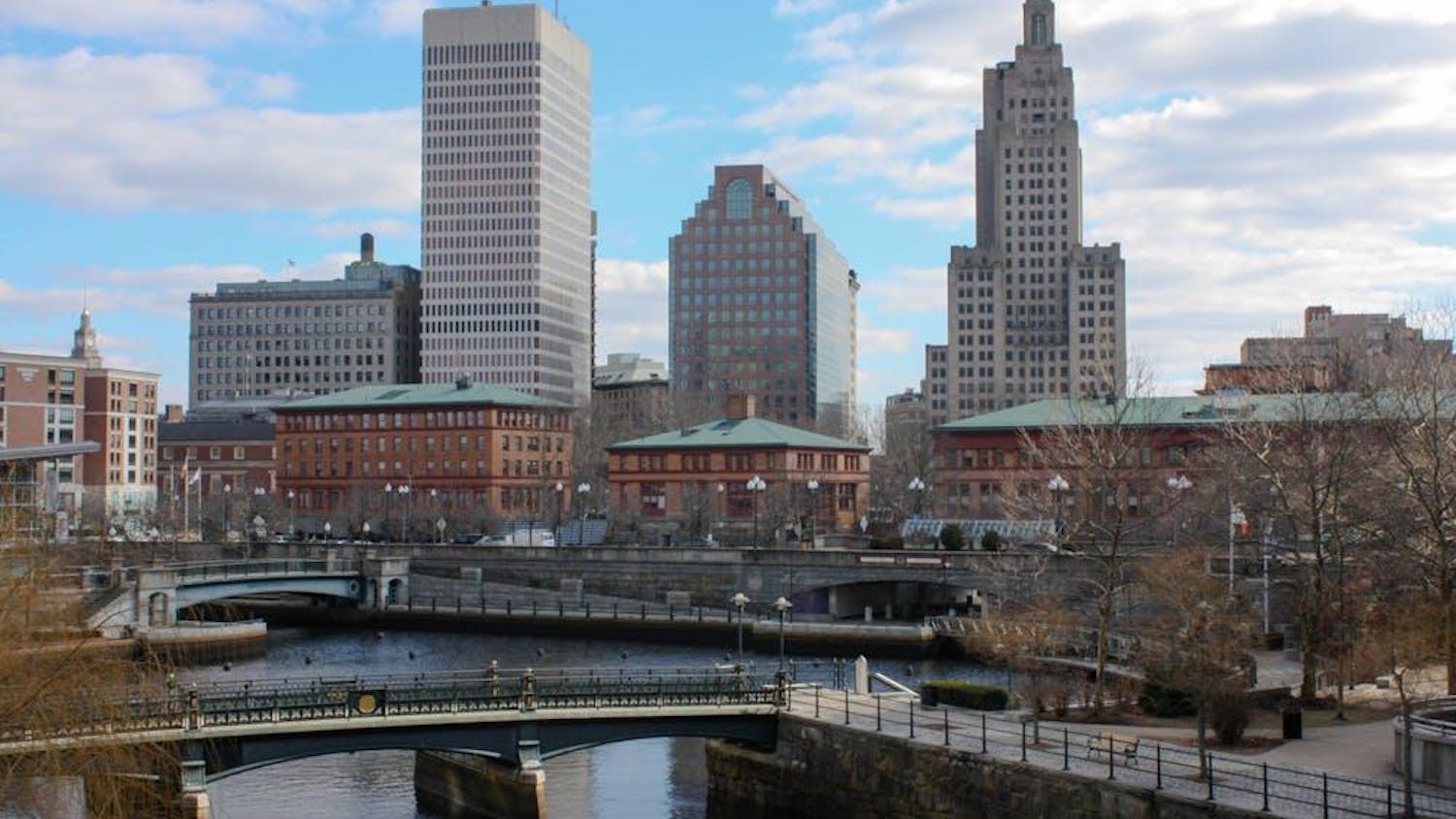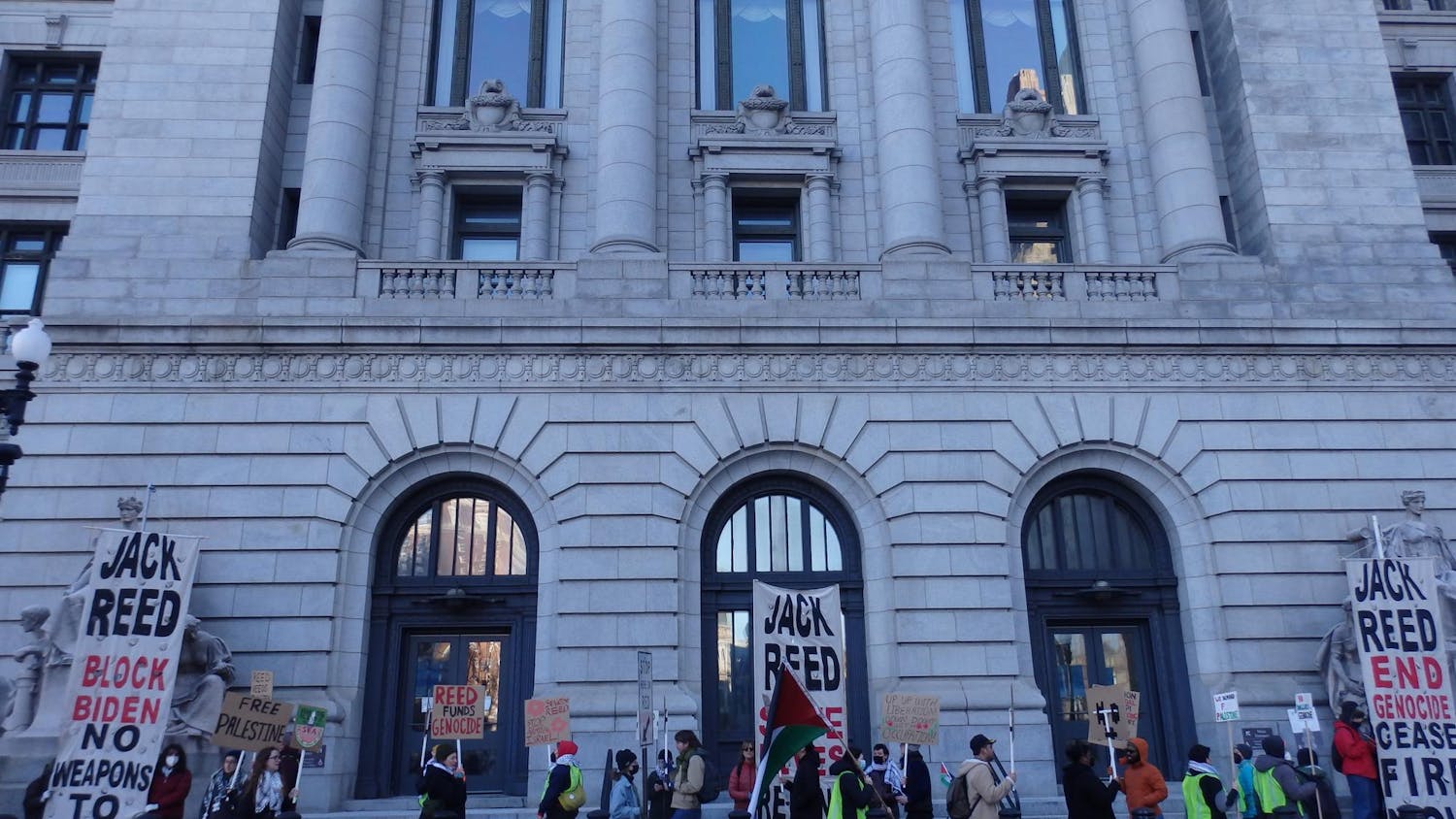A University construction project in the Jewelry District could be delayed as a consequence of ongoing negotiations with public utilities company National Grid and the discovery of unsafe soil under building sites.
The project, slated to begin in 2014 and announced by President Christina Paxson in late June, would include renovating Dynamo House, edifying an apartment building in Davol Square and constructing a new parking garage on Point Street.
Connected substation creates gridlock
A National Grid substation that provides energy to nearby areas of Providence adjoins Dynamo House. The renovation project would bury power lines and move the substation to National Grid’s land just north of Dynamo House, said project developer Rich Galvin ’79 of Commonwealth Ventures.
The substation blocks one row of Dynamo House’s windows, and the buildings’ proximity to one another practically prohibits residential use of Dynamo House, said Arthur Salisbury, president of the Jewelry District Association. Salisbury called the substation outdated, adding that National Grid has previously discussed building a new one. “It’s just a question of when,” he said.
Though there are ongoing discussions with a number of parties interested in the area, no conclusion has yet been reached, said David Graves, National Grid’s lead media relations representative.
“We understand the importance of the project for economic and academic reasons, but we have an obligation to meet the needs of our electric customers,” Graves said. Erecting new apartment buildings in an area previously lacking residential space could also create new demand for electricity, he added. National Grid is conducting a study investigating the long-term impacts of this construction on the city and the cost of moving the substation.
Commonwealth Ventures had not approached National Grid prior to releasing its plans, but Graves said he was in contact with Galvin before the Dynamo House plans were proposed, the Providence Journal previously reported.
The project is complicated because there are many different stakeholders involved, said Provost Mark Schlissel P’15. “Everything changes on a day-to-day basis.”
The 2014 deadline “came from all of us wanting to push this project along,” Galvin said. He is not sure how negotiations will affect the project’s timeline, he added, but they are “moving forward on all fronts.”
Contaminated soil concern
Hazardous contaminants in the soil of the building sites may add to the project’s potential delay.
In the past, Dynamo House and the surrounding property was contaminated by the massive production of electricity that once took place there. A previous developer of the property began cleaning interior contamination but terminated the project, leaving the site an “open remediation project,” wrote Gail Mastrati, Rhode Island Department of Environmental Management spokeswoman, in an email to The Herald. There were problems with inorganic compounds in the soil of the site, petroleum staining and mercury in the basement, Mastrati wrote. The mercury contamination was cleared in 2007 and 2008, and a 2007 Environmental Land Use Restriction approved construction of a partially residential building without residences on the first floor on the property, where residential construction was previously prohibited.
A piece of the property now used as a parking lot was found to have contaminated groundwater and soil, with soil contaminants including inorganic metals, petroleum, polycyclic aromatic hydrocarbons and, in some areas, urban fill, Mastrati wrote, but Galvin said these chemicals are not particularly concerning. Contaminated soil is expected in industrial New England zones, he said. “Sure, there’ll be problems, but sure there’ll be solutions,” he added.
There are ways to safely proceed with construction on contaminated soil — soil removed from contaminated areas can be carted away or covered during construction, Salisbury said.
As long as site workers wear the correct protective gear while on the site, “no toxic effects are expected to occur as a result of the development,” wrote Sophie O’Connell, interim public information officer at the Rhode Island Department of Health in an email to The Herald.
Davol Square, the site of proposed apartment building construction, was once home to a rubber product factory. Though the Environmental Protection Agency ruled in 1995 that “no remedial action was required,” DEM ruled that “the soil of the property should be left undisturbed,” the Journal reported.
Most of the foundations for the buildings are already laid, so the soil would not be disturbed during the proposed construction, Galvin said.
While Davol Square’s current owner has not yet submitted an ELUR and Soil Management Plan, DEM now sees no potential conflict with the use of the area for residential or commercial purposes if the construction accords with the ELUR and SMP, Mastrati wrote.
The ‘ripple effect’
Whether the groundbreaking occurs as expected in 2014 or at a later date, partners of this $200 million project said they have high hopes for the economic effects of the development. “Brown’s investment with the state speaks volumes about the validity of the project,” said Laurie White, president of the Greater Providence Chamber of Commerce.
The old, empty property is limiting the area’s potential for development, Salisbury said. After the construction, it is more likely that new industries will invest in the area and boost business and retail sales, and the initial stages of construction will create jobs for construction workers.
ADVERTISEMENT




